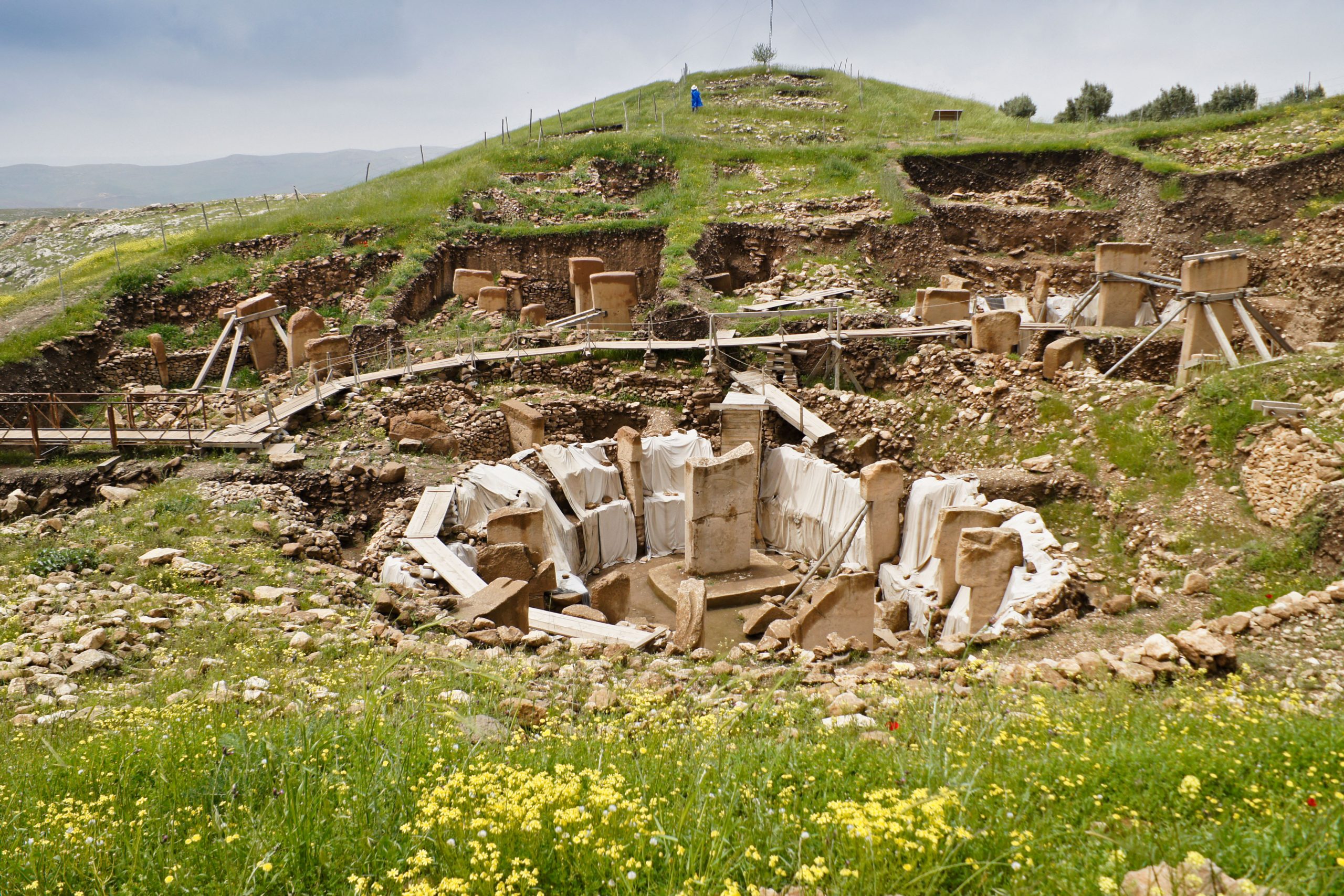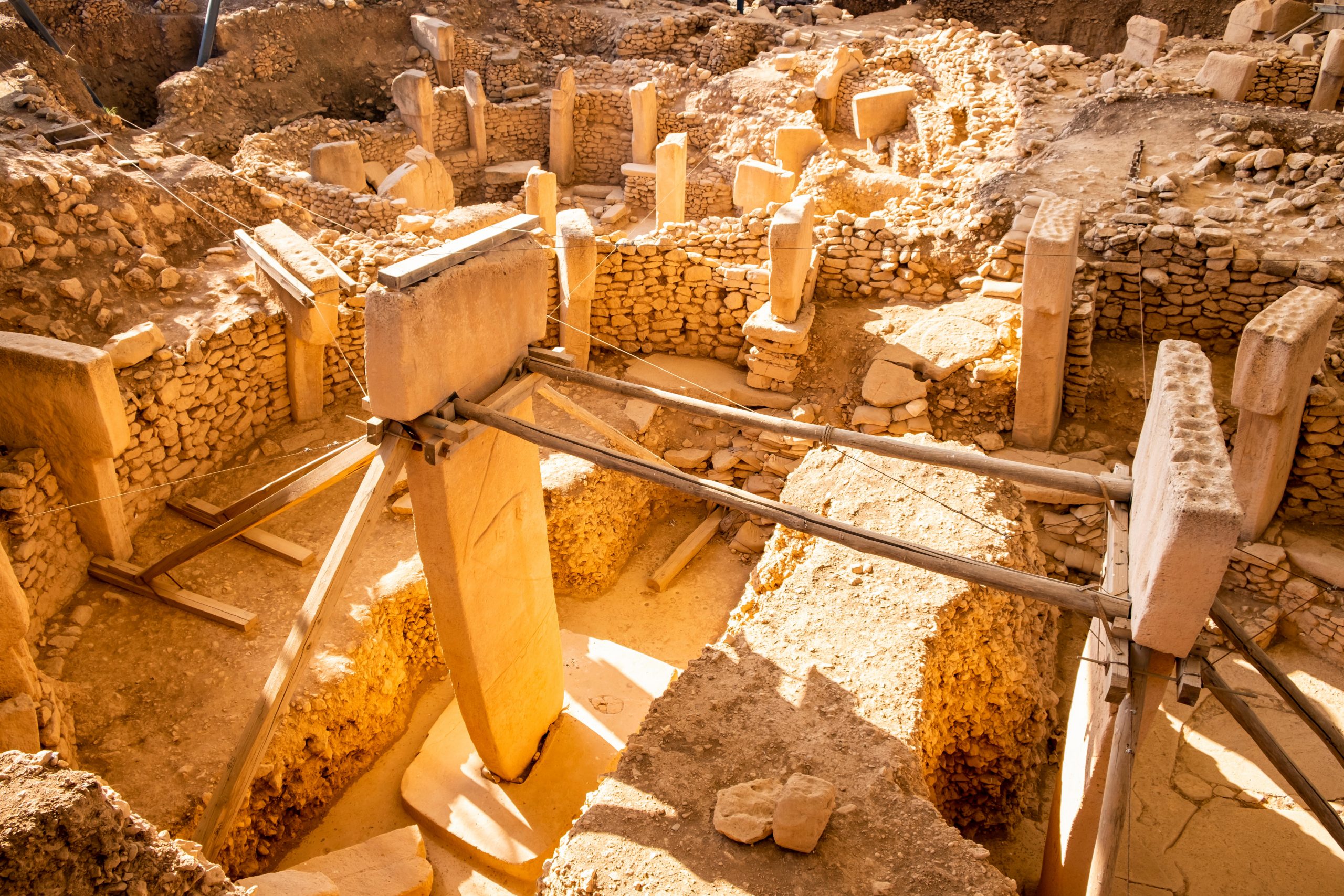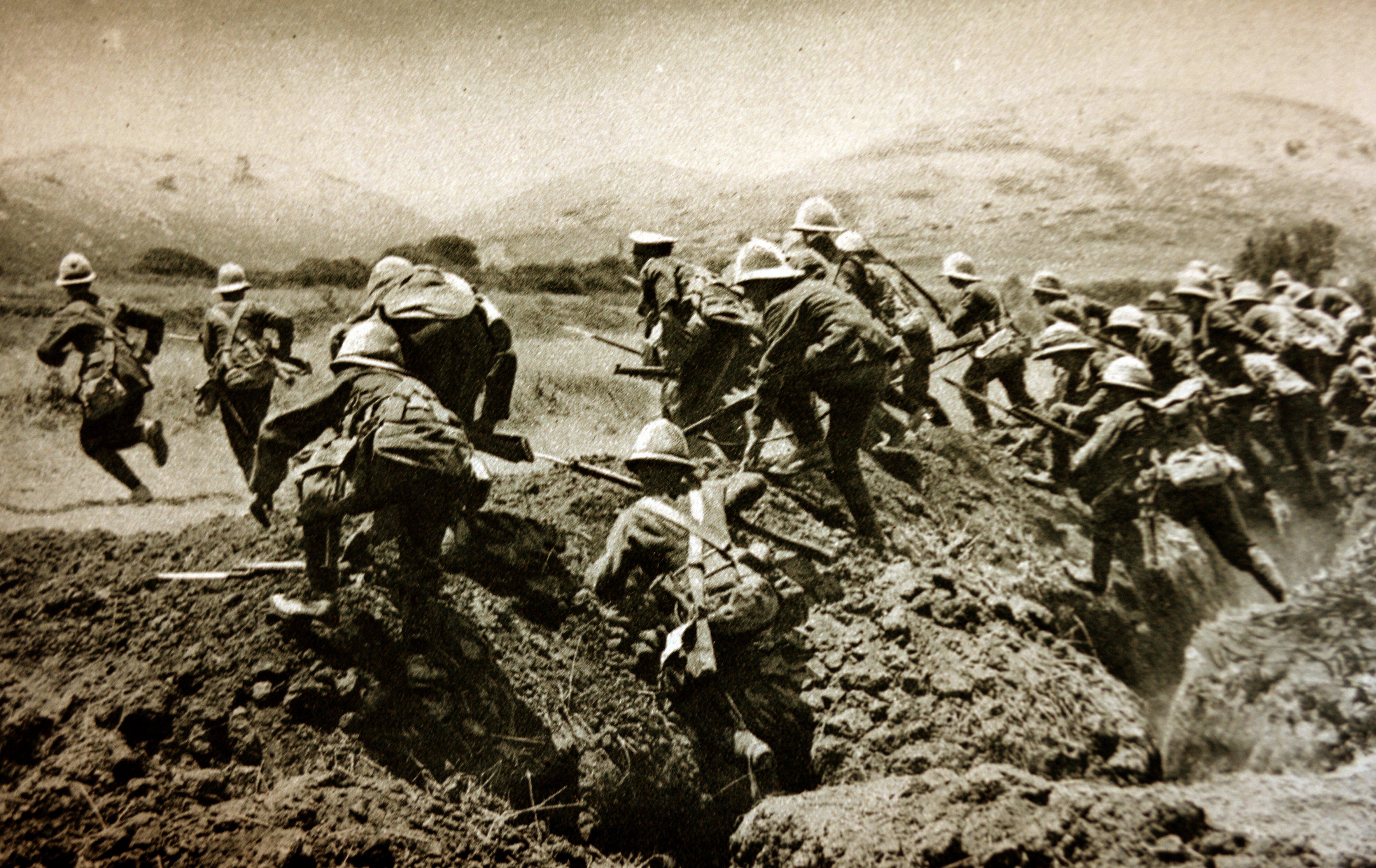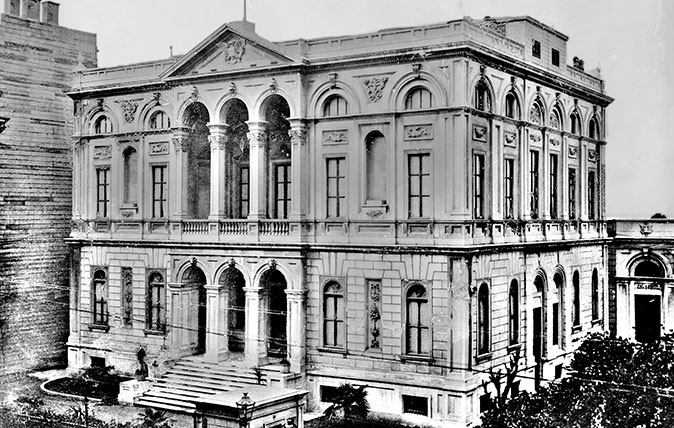Jason Goodwin: The ruins 7,000 years older than Stonehenge which overthrow the way we think about our common past
If you're visiting somewhere extraordinary such as Göbekli Tepe, don't snap away on your phone — take a sketchbook. Jason Goodwin explains why.

‘I would like,’ I said, ‘to learn how to draw. I only have 10 days.’
The walls of John Meaker’s Abbotsbury studio in Dorset are lined 20ft high with oils and charcoal sketches and a number of empty easels stand around on the floor. Mr Meaker didn’t bat an eyelid, until I told him I was planning to revisit Göbekli Tepe. ‘We might start with these,’ he suggested, making a ring of different-sized bottles on a table. ‘Here’s your circle of standing stones.’
Four years ago, I was introduced to Göbekli Tepe by the polymathic Turcophile Jeremy Seal, who leads carefully curated tours through Turkey (if you want to see any of this, and you do, speak to him first — you'll find him at www.somewherewonderful.com). Unearthed on a hilltop in the barren badlands of south-east Turkey, close to the Syrian border, the dig at Göbekli has exposed a complex of rings, composed of huge, flat stones with hammerheads, carved with animals and birds, insects and even human arms.

These are the earliest human structures ever found. Stonehenge is 5,000 years old; the Pyramids much younger. Göbekli was erected 12,000 years ago, in about 10,000bc, above the plains of Mesopotamia where farming was to be invented. Built by nomadic hunters on the cusp of settlement, the implications of Göbekli Tepe are staggering and overthrow the way we think about our common past, the shift to agriculture and the religious impulse.
On that first visit, Isis still roamed the borderlands and the Turkish army was launching punitive raids against Kurds across the frontier. Nobody was travelling. We saw the dig and even went to a distant hill called Karahan Tepe, where the tops of similar stones stuck up through the limestone and the wizened grass. There is only one Stonehenge, but it seems there are dozens, perhaps hundreds of Göbekli Tepes, waiting to be unearthed. It was January, raining, cold; the local farmers took us into a house as bleak as the landscape, where invisible women prepared tea in tulip-shaped glasses. Then came the pandemic — and the archaeologists kept digging. When Jeremy proposed a further recce, we booked flights.

Mr Meaker understood I didn’t want to come home with flat, uninformative photographs taken on a mobile phone. I wanted to engage. I wanted to draw. I drew bottles in the round and tried pencil and charcoal and dust. My tutor showed me how to make a watercolour wash of cerulean blue, winsor violet and raw sienna. ‘I’m sure you must have done this before,’ he said, encouragingly. ‘That’s what you say to all the girls,’ I said.
In Istanbul, I discovered what amateur artists have known for centuries: that a man with a sketchbook is an acceptable quantity. Snap indiscriminately with your iPhone and people immediately dislike you — and why not? You are not stealing their souls, perhaps, but you are trivialising their existence: they exist as background, frozen in an unrepresentative moment of your choosing.
Exquisite houses, the beauty of Nature, and how to get the most from your life, straight to your inbox.
But settle in a corner with a pencil and a sketchbook and you become a more agreeable, or at least tolerable, voyeur. You must have seen something interesting, beautiful and composed to stop and draw. You’re not catching people on the hop or on the fly. You are joining in.
My pictures are atrocious. The lines go in the wrong direction, the shading is cartoonish, the ensemble is feeble and fussy and flat. But in those moments of composition, I had time to look, and looked hard, at stones and shapes and meanings and mysteries that have not been seen by any of us for 12,000 years.

Jason Goodwin: The madness of Gallipoli, and the British officer ordered to fight the men who once honoured him
After years of regular visits to Turkey, Jason Goodwin finally makes it to Gallipoli where he is humbled and sobered

Jason Goodwin: The hotel rooms where Agatha Christie wrote her most famous book, and where Turkey became a modern nation

Jason Goodwin: In memory of Norman Stone, my tutor, guide, world traveller — and friend
Jason Goodwin pays tribute to an old friend and mentor.

Credit: Getty Images
Jason Goodwin: 'My friend was puzzled to discover me up a stepladder, cradling my airgun and scanning vegetable beds'
Jason Goodwin takes on the rats, and loses.